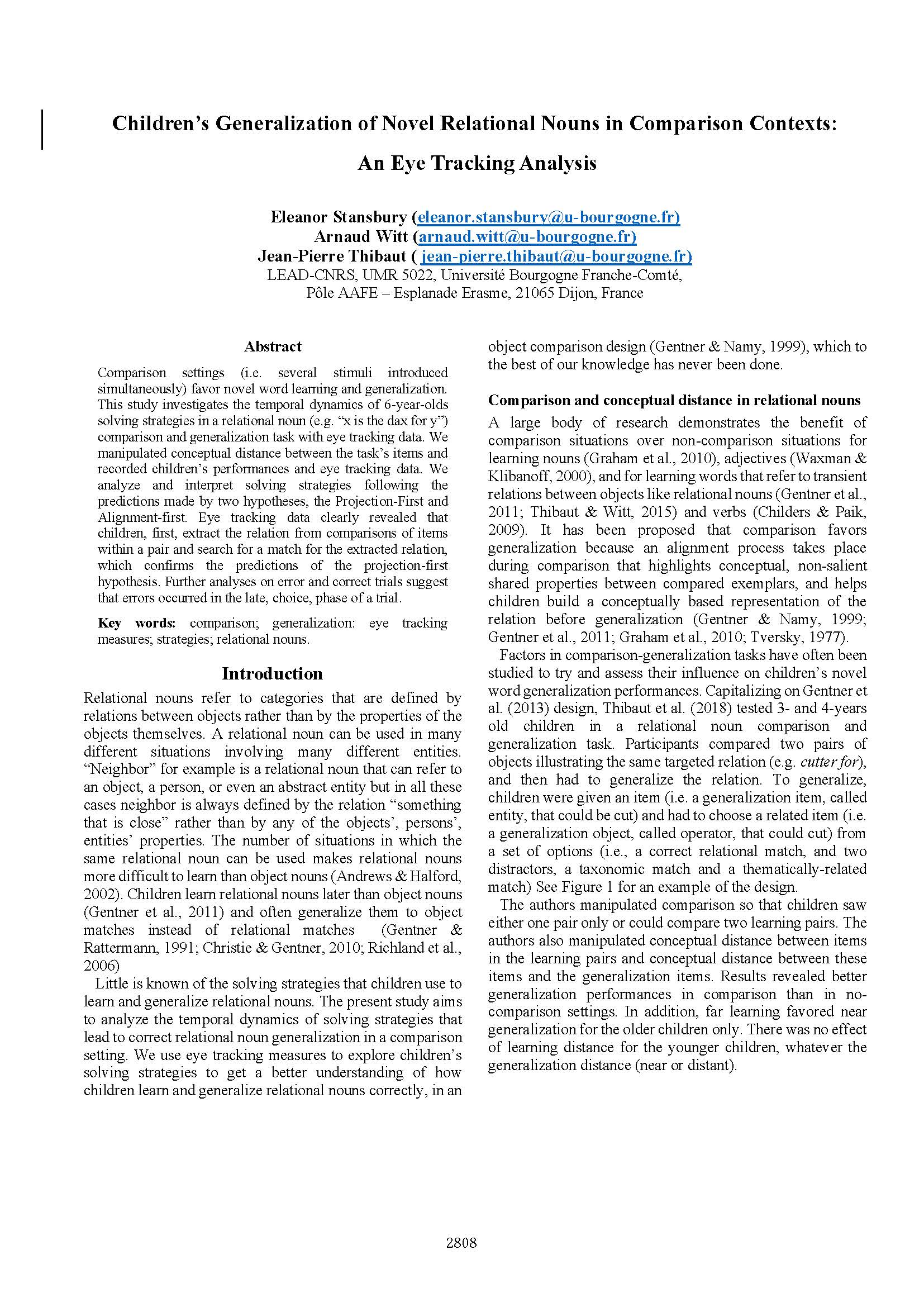Comparison settings (i.e. several stimuli introduced simultaneously) favor novel word learning and generalization. This study investigates the temporal dynamics of 6-year-olds solving strategies in a relational noun (e.g. “x is the dax for y”) comparison and generalization task with eye tracking data. We manipulated conceptual distance between the task’s items and recorded children’s performances and eye tracking data. We analyze and interpret solving strategies following the predictions made by two hypotheses, the Projection-First and Alignment-first. Eye tracking data clearly revealed that children, first, extract the relation from comparisons of items within a pair and search for a match for the extracted relation, which confirms the predictions of the projection-first hypothesis. Further analyses on error and correct trials suggest that errors occurred in the late, choice, phase of a trial.
Children’s generalization of novel relational nouns in comparison contexts: An eye tracking analysis
